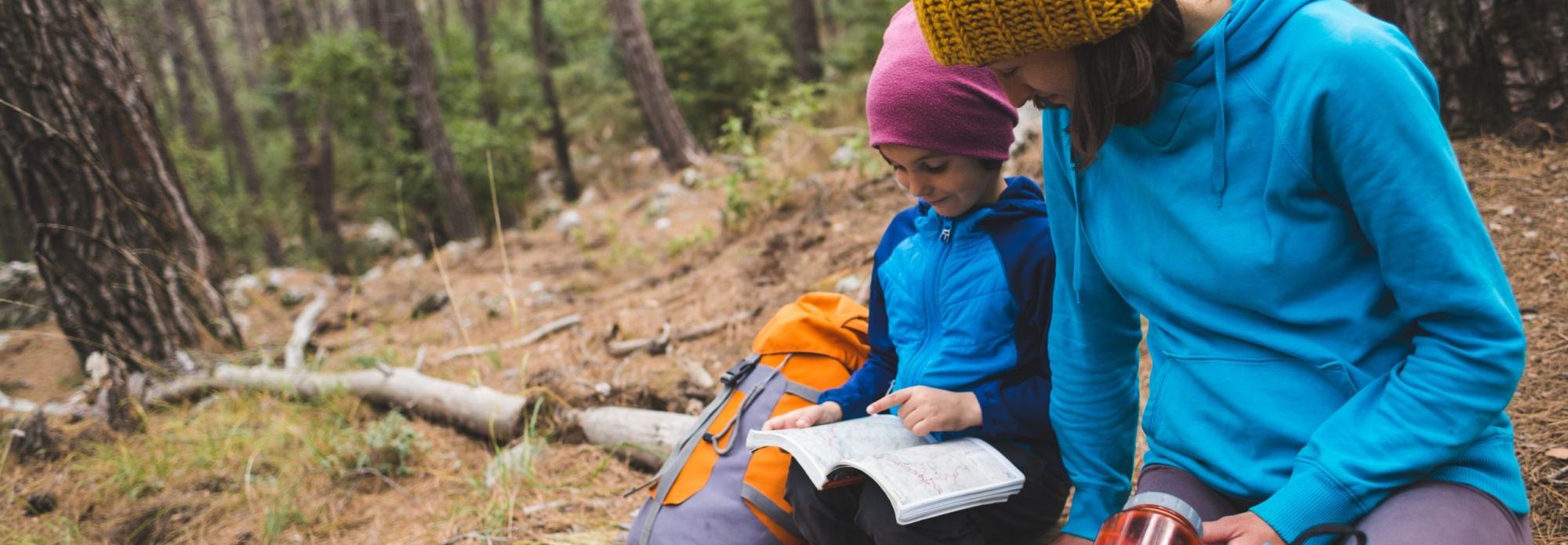VOLUNTEER

Four Decades of Walking in the Woods
Peter Forsythe arrived in Prince George as a forester and firefighter, rappelling out of helicopters after lightning strikes to protect challenging terrain. Now retired, he’s still walking in the woods, sharing what he knows about forests and ecology with students and others, dispelling myths about softwood cones along the way.
But he needs more company.
Since 1985, Peter has led and helped organize guided tours of the Willow River Interpretive Trail in Prince George during National Forest Week (NFW), September 21-27 this year. Planning for “A Walk in the Woods” is underway and more volunteer guides are needed.
After 40 years, “I still find it enjoyable,” says Peter, who was a mechanic in the U.S. Army, then a machinist in a graphite factory before going back to school to study forestry.
He was part of the first graduating forestry class at the University of Alberta, then worked several jobs before starting his own company, Huckleberry Forestry Ltd., doing mostly surveys in addition to “handyman” work.
He got involved with the BC coalition for NFW and the Canadian Institute of Forestry (CIF) when he helped install the first signs for A Walk in the Woods. The two-kilometre trail now features 22 interpretive signs that highlight local wildlife, forest ecology, and environmental insights.
“I replaced the original interpretive signs a few years ago with a volunteer crew,” says Peter, a NFW section co-ordinator.
During NFW, tours of the trail are held Monday through Friday for elementary school students. Public tours are held on the Saturday. Buses transport students to the trailhead near the highway rest stop. Transportation is also provided for the public tour, along with a free lunch.
Tours take 45 to 60 minutes and are kept to about eight people per group. Five to six volunteers a day are needed. Peter can be at the trailhead every day during NFW in case someone doesn’t show or an extra guide is required.
For him, NFW is a way to educate the public and get people outside to experience the forest.
“Some students have never been outside of Prince George,” he says.
Some of them ask tough questions too, as he’s learned.
“The students can ask tougher questions than the adults, and some students know a lot more than a lot of adults.”
Peter recalls one inquisitive student, about nine or 10 years old, who grilled him with all sorts of harvesting questions.
“Obviously he had been around someone who knew a lot about forestry.”
Peter says volunteer guides don’t have to focus on any single subject and encourages them to try and learn the interests of those in the group before starting the tour.
“It doesn’t really matter if you concentrate on fungus, trees, or berries,” he adds. “They should enjoy the walk and have learned something about the forest, and I think that most do.”
Anyone who’s ever walked in the woods with Peter probably learned that not all softwood cones are pine cones.
“Most people refer to any cone as a ‘pine cone’ — both kids and adults. I usually pick up two different cones from the trail, then hold them up and ask what kind they are. This generally will elicit questions about trees and other plants,” he says.
It’s an effective lesson that fits the NFW mission to support forest education and awareness.
The trail is rich with spruce, pine, and birch, with areas recovering from harvests, wildfires, and beetle infestations.
“This is a fantastic opportunity for students to actually experience the forest,” Peter says of A Walk in the Woods.
To him, the forest is a classroom waiting to be explored, and he’s hoping more forest professionals will join him in leading the way.
Walk in the Woods
To volunteer for A Walk in the Woods, contact Peter Forsythe at peterforsythe@mail.com.
Tour guide training will be provided for those wanting it during the week prior to NFW.
Teachers interested in class tours should contact Anna Monetta, RPF(Ret.) at amonetta@shaw.ca.



